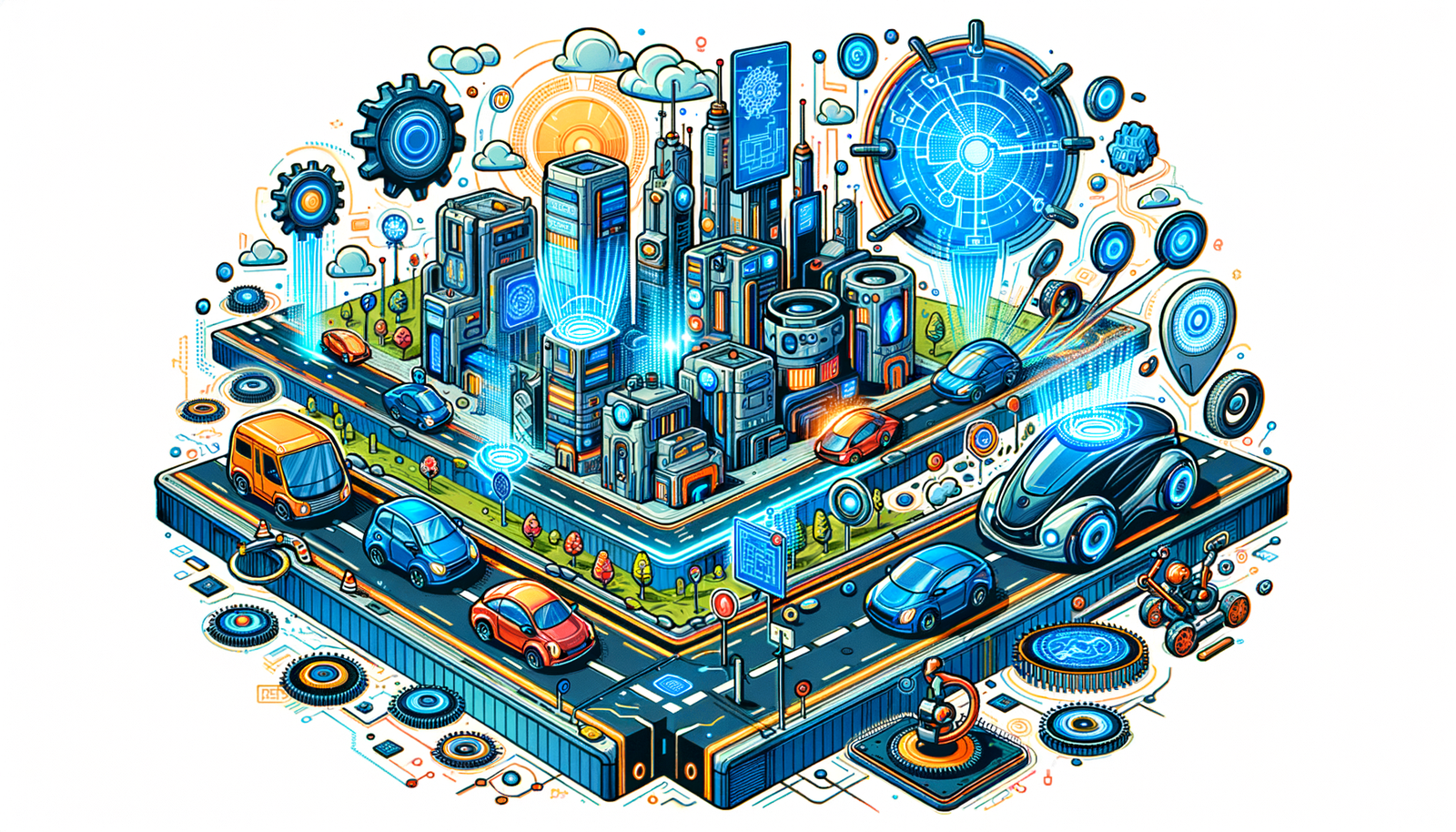Your Cart is Empty
Customer Testimonials
-
"Great customer service. The folks at Novedge were super helpful in navigating a somewhat complicated order including software upgrades and serial numbers in various stages of inactivity. They were friendly and helpful throughout the process.."
Ruben Ruckmark
"Quick & very helpful. We have been using Novedge for years and are very happy with their quick service when we need to make a purchase and excellent support resolving any issues."
Will Woodson
"Scott is the best. He reminds me about subscriptions dates, guides me in the correct direction for updates. He always responds promptly to me. He is literally the reason I continue to work with Novedge and will do so in the future."
Edward Mchugh
"Calvin Lok is “the man”. After my purchase of Sketchup 2021, he called me and provided step-by-step instructions to ease me through difficulties I was having with the setup of my new software."
Mike Borzage
Design Software History: Key Developments in the Evolution of Design Software for Renewable Energy Systems
August 16, 2024 4 min read


Early Developments in Design Software for Renewable Energy Systems
Renewable energy systems, encompassing technologies like solar, wind, and hydroelectric power, have long been regarded as essential for creating a sustainable future. These systems aim to harness natural energy sources to generate electricity, thereby reducing dependency on fossil fuels and minimizing environmental impact. However, the complex nature of these systems necessitated the development of specialized design software to effectively model and optimize their performance.
In the early stages, several challenges were encountered in designing renewable energy systems. Engineers grappled with the unpredictability of natural resources, the integration of systems within existing infrastructure, and the need for accurate modeling to predict performance under varying conditions. Initial software solutions were often rudimentary, focusing on basic simulation capabilities to provide a rough estimation of system outputs.
Pioneering Companies and Software
One of the first significant players in the renewable energy software market was TRNSYS, a versatile energy simulation software initially developed in the late 1960s. TRNSYS, short for Transient System Simulation Tool, was designed to enable the simulation of energy systems' transient behavior. Another key development was RETScreen, introduced by Dr. Michel Letendre. RETScreen aimed to provide a comprehensive suite of tools for analyzing the energy production, cost, and emission reduction potential of renewable energy projects.
Initial Capabilities and Limitations
The initial capabilities of these early software solutions were quite limited. They offered basic simulation and design features but struggled with the constraints of the computational power available at the time. Complex models often had to be simplified, leading to less accurate predictions. Additionally, the lack of sophisticated algorithms hindered the ability to perform detailed performance analysis, which is crucial for optimizing system efficiency and cost-effectiveness.
Evolution of Specialized Design Tools
Advancements in Computational Power and Software Algorithms
The 1990s and 2000s saw significant advancements in computational power, which profoundly impacted the development of renewable energy design software. With more powerful processors and increased memory capacity, software developers could create more complex and accurate models. This era also witnessed the introduction of more sophisticated algorithms, enhancing the precision of energy modeling and simulation.
Key Software Developments
During this period, several notable software tools emerged. HOMER Energy, developed by the National Renewable Energy Laboratory (NREL), became a key player in the field. HOMER (Hybrid Optimization Model for Electric Renewables) was designed to simplify the task of optimizing microgrid and distributed generation systems. Another significant development was the System Advisor Model (SAM), also supported by NREL, which provided detailed performance and financial analysis capabilities for renewable energy projects.
Integration of Geographic Information Systems (GIS)
The importance of geographic data in renewable energy system design cannot be overstated. GIS technology allowed for the integration of spatial data, which is crucial for accurately assessing the viability and potential of renewable energy projects. Software like ArcGIS began incorporating renewable energy modules, enabling designers to overlay geographic data with system performance models to make more informed decisions. This integration allowed for the precise mapping of resources, such as solar insolation and wind speeds, to optimize the placement and design of renewable energy systems.
The Role of Simulation and Optimization in Modern Design Software
Simulation Capabilities
Modern design software for renewable energy systems has evolved to include highly detailed simulation capabilities. These tools can model the performance of energy systems under a wide range of conditions, providing valuable insights into system behavior and performance. For instance, PVsyst is widely used for simulating solar energy systems, offering detailed analysis of shading, performance, and financial viability.
Optimization Techniques
Optimization algorithms have become an integral part of modern design software, enabling engineers to maximize efficiency and minimize costs. HOMER Energy, for example, implements sophisticated algorithms to optimize hybrid renewable energy systems. These algorithms consider various parameters, including cost, performance, and environmental impact, to identify the most efficient system configuration.
Interdisciplinary Integration
Designing effective renewable energy systems often requires the integration of multiple engineering disciplines, including electrical, mechanical, and environmental engineering. Software solutions like OpenStudio and EnergyPlus are designed to accommodate this interdisciplinary approach. OpenStudio, for example, provides a user-friendly interface for creating detailed building energy models, while EnergyPlus offers advanced simulation capabilities for analyzing building energy performance.
Future Trends and Innovations in Renewable Energy Design Software
Artificial Intelligence and Machine Learning
The future of renewable energy design software is poised to be significantly influenced by the integration of artificial intelligence (AI) and machine learning (ML). These technologies have the potential to enhance predictive modeling and optimization processes. Companies like DeepSolar and Google’s Project Sunroof are already leveraging AI to analyze large datasets and improve the accuracy of renewable energy predictions.
Cloud Computing and Real-Time Data Integration
Cloud computing is revolutionizing the way renewable energy systems are designed and managed. Cloud-based platforms enable collaborative design processes and real-time data integration, facilitating more efficient and responsive system management. Examples of such platforms include Aurora Solar and HelioScope, which offer cloud-based tools for designing and optimizing solar energy systems with real-time data.
Sustainable and Smart Grid Integration
As the global energy landscape continues to evolve, there is a growing emphasis on integrating renewable energy systems into larger smart grids. This integration aims to create interconnected and automated energy networks that can efficiently manage energy production and consumption. Future software developments will likely focus on enhancing the interoperability and intelligence of these systems, ensuring seamless integration and optimal performance.
Conclusion
In summary, the evolution of design software for renewable energy systems has been marked by significant advancements in computational power, software algorithms, and interdisciplinary integration. The future holds exciting potential for further innovations, driven by AI, cloud computing, and smart grid technologies. As the industry continues to evolve, the continuous need for innovation and multidisciplinary collaboration will be crucial in addressing the complex challenges of designing efficient and sustainable renewable energy systems.
Also in Design News

Driving the Future: AI-Enhanced CAD for Automated Design Optimization
May 09, 2025 8 min read
Read More
ZBrush Tip: Maximize Your ZBrush Workflow with Advanced PolyPaint Techniques
May 09, 2025 2 min read
Read MoreSubscribe
Sign up to get the latest on sales, new releases and more …



